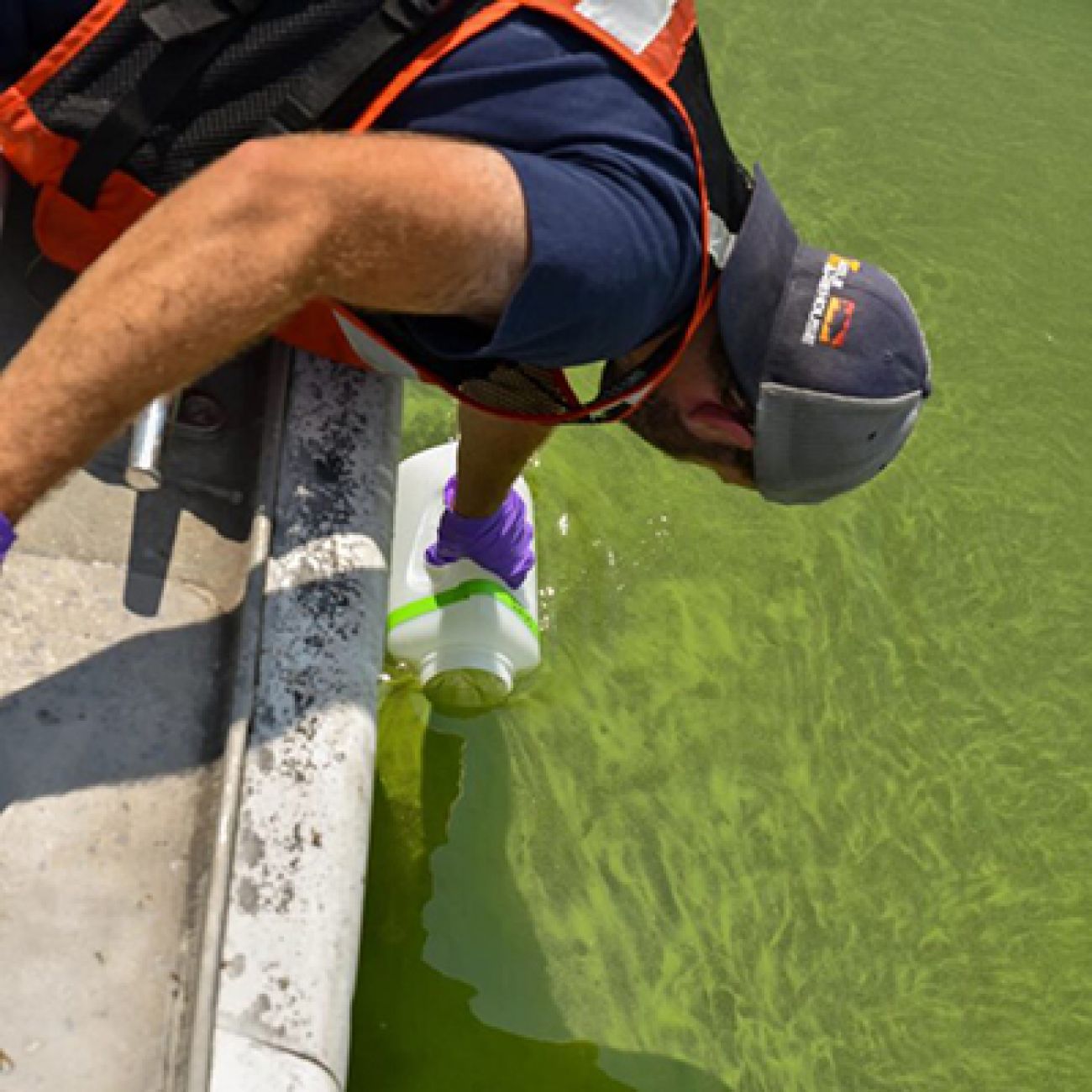Harmful algal blooms appearing on Lake Erie earlier than usual

Harmful algal blooms are forming in some parts of Lake Erie earlier than typical. Satellite images released by the National Oceanic and Atmospheric Administration NOAA on Wednesday (July 5) show cyanobacterial blooms forming along coastal areas.

Researchers from the University of Michigan based Cooperative Institute for Great Lakes Research (CIGLR) were taking samples of Lake Erie water on the same day. One of the sampling sites was covered with what look to be cyanobaterial blooms –sometimes called blue-green algae.
Andrew Camilleri with CIGLR was surprised to find the blooms this early in the summer. Typically, they don’t start forming until August and some years as late as September or early October.

The harmful algal blooms were located on the eastern side of Maumee Bay near Toledo.
“It’s really shallow there. And so, if you do get a rain, those nearshore areas are certainly going to warm up first and then also be very responsive to that near-shore runoff,” said Ed Verhamme with Limno Tech. That company places environmental data buoys in the lake to monitor conditions.
He said recent rains might have stirred up phosphorous which accumulated near the bay which primarily originated from agricultural sources in the Maumee River watershed.
“This year we had hot, dry conditions. But, that doesn’t mean that a lot of phosphorus wasn’t delivered before that happened. So, I think it’s just been this spring warm up and how stagnant the water has been with the warm weather we’ve had,” Verhamme said.

A NOAA forecast issued June 29 projected a “smaller-than-average” bloom. Rick Stumpf with NOAA said the severity of the bloom was expected to be around “3.” Last year’s harmful algal bloom severity was 6.8. The highest severity index was 10.5 in 2015.
“The forecast doesn’t consider warm months or cold months or wet last week and dry next week,” Verhamme said.
He described the forecast as looking at the seasonal load of phosphorus in making its forecast for the peak expanse of the harmful algal bloom. Based on a very dry May and cooler weather in the spring, the conditions did not indicate a severe bloom.
This article is part of The Great Lakes News Collaborative, which includes Bridge Michigan, Circle of Blue, Great Lakes Now at Detroit Public Television, and Michigan Radio. It unites newsroom resources to report on the most pressing threats to the Great Lakes and drinking water supplies, including pollution, climate change, and aging infrastructure. The independent journalism is supported by the Charles Stewart Mott Foundation.
Related:
- Nearly $1.2 billion spent at one site to deter invasive carp from Great Lakes; other entry sites still possible
- Will Michigan’s largest water provider target tiny city for next shutoffs?
- Nessel: $10B PFAS settlement with 3M doesn’t resolve Michigan’s claims
Heavy rains in the spring can wash phosphorus loads downstream and those heavy rains didn’t develop this year.
Watching from the research vessel, the crew spotted a boat towing an inner tube with people on it through the green soup of cyanobacterial blooms on Wednesday.
During the forecast last week, Stumpf warned, “Keep yourself, your kids, and your dog out of the scum-like blooms or anywhere the water looks green.”
As reported last week, the blooms can release a toxin that damages the liver which poses a risk to people or animals that come into contact with it.
Michigan Environment Watch
Michigan Environment Watch examines how public policy, industry, and other factors interact with the state’s trove of natural resources.
- See full coverage
- Subscribe
- Share tips and questions with Bridge environment reporter Kelly House
Michigan Environment Watch is made possible by generous financial support from:
Our generous Environment Watch underwriters encourage Bridge Michigan readers to also support civic journalism by becoming Bridge members. Please consider joining today.
See what new members are saying about why they donated to Bridge Michigan:
- “In order for this information to be accurate and unbiased it must be underwritten by its readers, not by special interests.” - Larry S.
- “Not many other media sources report on the topics Bridge does.” - Susan B.
- “Your journalism is outstanding and rare these days.” - Mark S.
If you want to ensure the future of nonpartisan, nonprofit Michigan journalism, please become a member today. You, too, will be asked why you donated and maybe we'll feature your quote next time!






